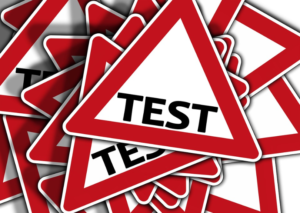There is no doubt that professional skills are important to detect a valuable and talented person for your team. However, skills alone aren’t enough to select a top candidate and many experts claim that personal traits are more important. Resumes might include inaccuracies and even lies, while achievements and previous work experience provide zero information about a candidate as a person. Today, the job market is adopting a new hiring model, which pays more attention to psychological attributes. This move allows recruiters to go far beyond formal characteristics. Of course, it isn’t feasible to conduct a deep psychological test each time you interview an applicant, but there are ways to learn more about your potential hire. Psychographics in recruitment is one technique, which is revolutionizing marketing and soon hiring.
What are psychographics?

- Opinions
- Lifestyle
- Hobbies
- Core interests
- Behavioral patterns
- Preferences
As you can see, this is an over-all strategy. When applied to recruitment, the analysis would cover many factors. By gathering psychographics data during a recruitment process, you can learn how a candidate communicates with other people, what motivates them, and what values they have. With such information at hand, it is easier to predict an applicant’s behavior and even influence it. Thanks to a better understanding of candidates, recruiters could minimize risks and ensure that a candidate fit the company culture.
How to capture psychographics?
- Analyze speech
One way to learn more about the psychological structure of a candidate is to analyze their speech. The use of particular words, reactions, pauses and psychological blocks tell volumes about a person. There is always a risk that candidates have used an essay writing service for their CV or cover letter. However, when it comes to speech, no one else can speak on their behalf. This doesn’t mean recruiters should over analyze every little word, but they can be sure of the source. By learning how to read oral communication and body language, recruiters will learn more about candidates than they realise.
- Conduct a test

- Who is in front of you and what do they want to achieve?
In general, this is the core question you need to answer during an interview. You need to “meet” the candidate in an emotional and personal environment without making the interview too informal. Focusing on one’s goals and basic psychological traits, you will see what kind of opinion the person has themselves. For example, you could determine if the person is more likely to work at your company because of prestige, money or personal development. Knowing this, you will easily conclude if a person is going to stay there for a long period, or what type of benefits to offer.
Summing up
Recruiters hire people, not a list of skills. Even if you have the perfect candidate, that doesn’t mean they’ll stick around for the long haul. Thanks to psychographics, recruiters can gain insight into how to attract and retain top talent. Knowing a person’s motivations, ideals, and priorities will help develop a recruitment strategy. While there is no way you can predict the outcome of your interactions with a candidate based on an interview, you can make educated guesses. Psychographics is a great way to understand customers in marketing, and it’s only a matter of time before we use it to understand candidates for recruitment.
We would like to thank Sandra Larson for this contribution.
Author: Ali Neill
As the job board tester and blog editor for the Jobboard Finder, Ali works on job boards from all around the world and keeps a close eye on the recruitment trends thanks to a number of sources, including the website’s social media pages.

























« Why Your Association Needs Its Own Job Board
Making Healthcare A Priority for Recruiters »


This is something very interesting. I love this web post a lot. Psychographic characteristics often are measured by scales formed from a set of Likert items in which a series of statements are made and the respondent indicates the extent to which she or he agrees or disagrees with each statement. Have a wonderful day ahead!!